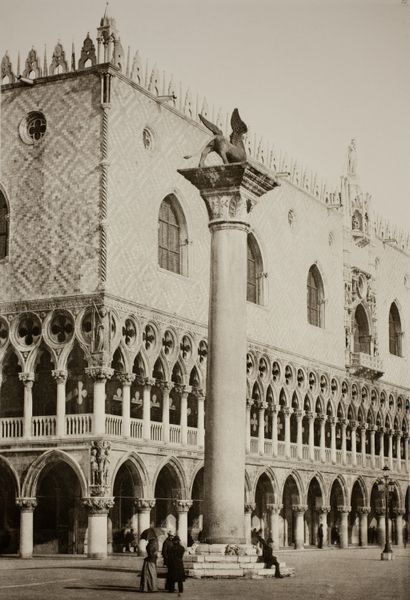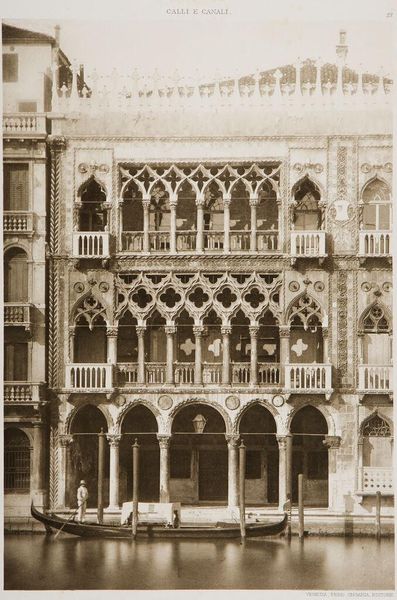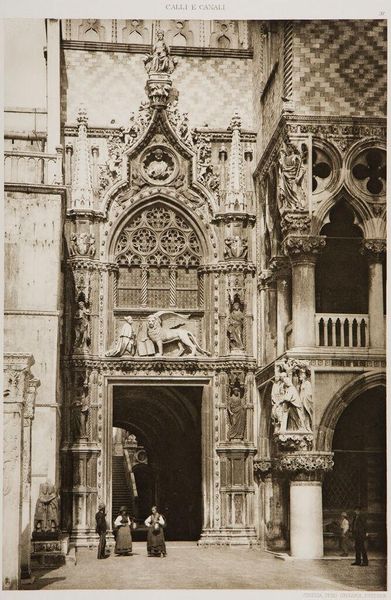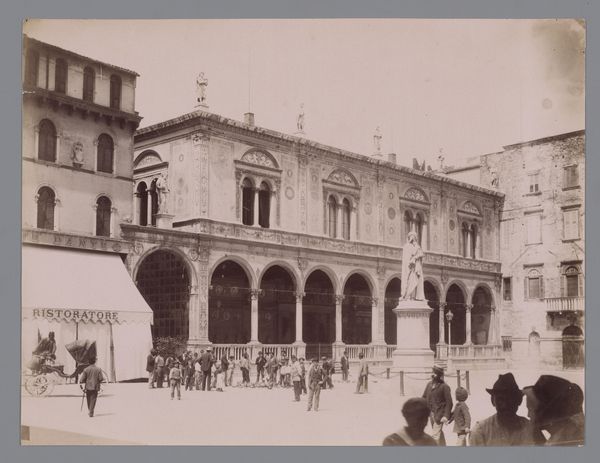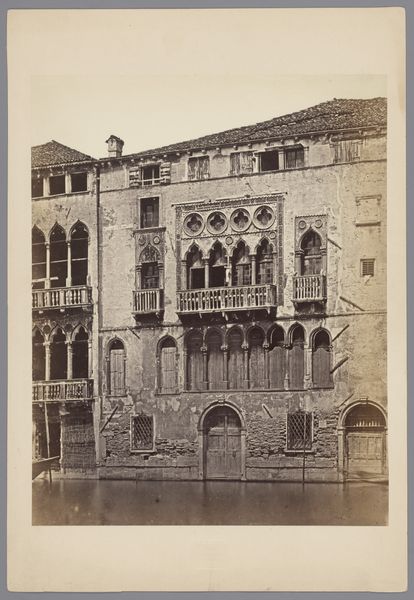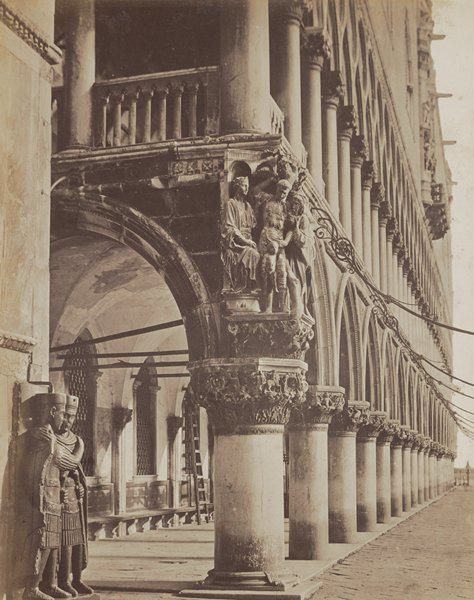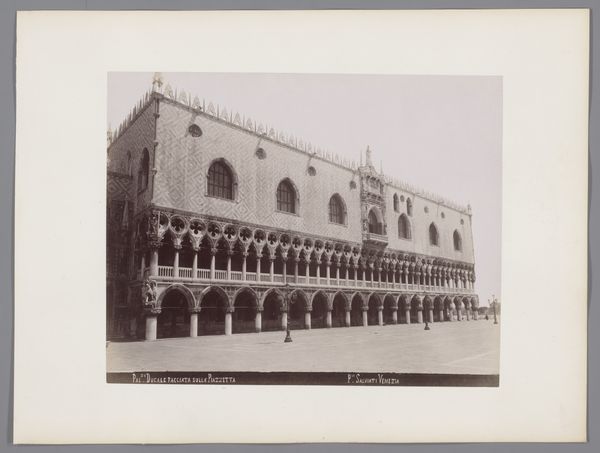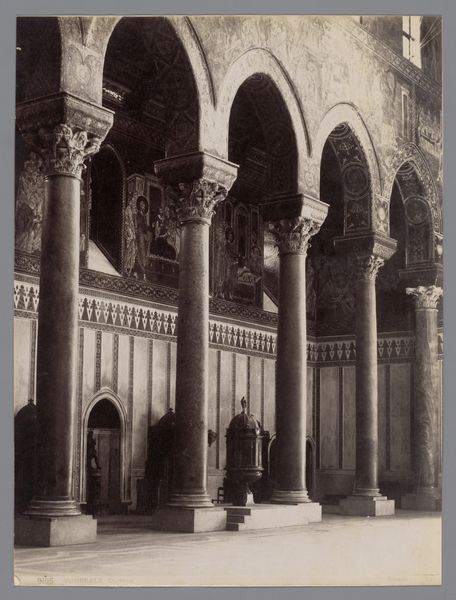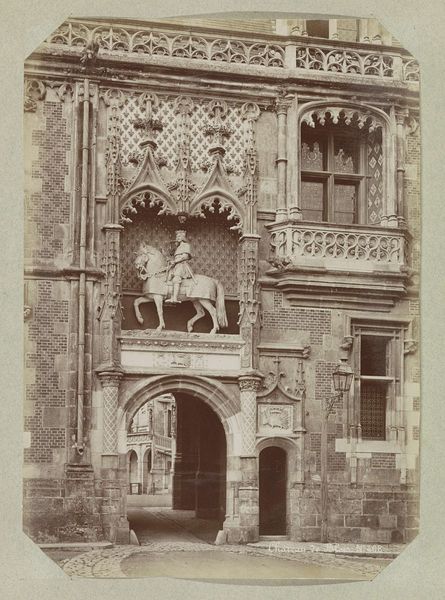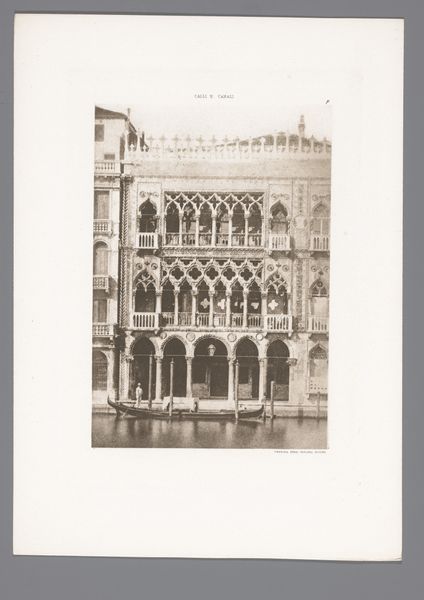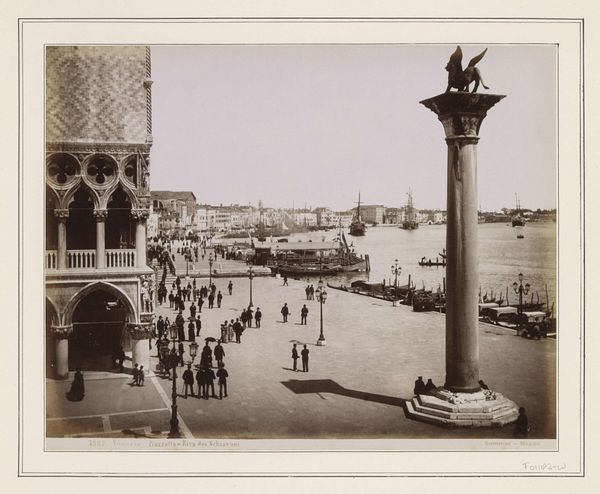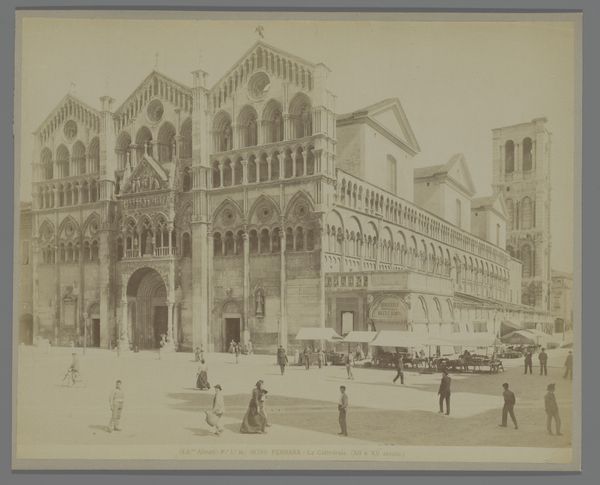
Column in the Piazetta of San Marco, corner of Ducal Palace 1890 - 1891
0:00
0:00
Dimensions: image: 33 x 28.2 cm (13 x 11 1/8 in.) mount: 54 x 36.5 cm (21 1/4 x 14 3/8 in.)
Copyright: CC0 1.0
Editor: This photograph, "Column in the Piazetta of San Marco, corner of Ducal Palace," was published by Ferdinando Ongania. It captures a grand architectural scene, but feels surprisingly still. What historical weight does this scene carry? Curator: This photograph speaks volumes about Venetian power and identity. The column, likely topped with a symbol of Venice like the winged lion, represents civic authority. Consider how its placement in the Piazetta, next to the Doge's Palace, visually reinforces state power. How does the composition influence your reading of it? Editor: I see the column dominating the foreground, almost like a barrier. Is it meant to separate the powerful from the public? Curator: Precisely! The column can be read as a deliberate marker of social and political division, reflecting the hierarchical structure of Venetian society. It prompts us to question who has access to power, and who is kept at a distance. Editor: That makes me see the figures in the foreground differently, almost as if they are excluded. Curator: Exactly. The photograph becomes a document not just of a place, but of social dynamics and power relations. Editor: I'll definitely remember to look beyond the surface when analyzing architectural images. Curator: Agreed. Art often reflects and reinforces societal structures; critical engagement helps us unpack those relationships.
Comments
No comments
Be the first to comment and join the conversation on the ultimate creative platform.
